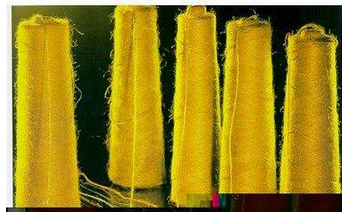
Jute Textiles
Manufacturing Industries of Class 10
Jute Textiles
India is the largest producer of raw jute and jute goods and stands at second place as an exporter after Bangladesh. There are about 70 jute mills in India. Most of these are located in West Bengal, mainly along the banks of the The first jute mill was set up near Kolkata in 0pt59 at Rishra. After Partition in 1947, the jute mills remained in India but three-fourth of the jute producing area went to Bangladesh.

Jute yarn
Factors Responsible for Localization of Jute industry is Hugli Basin proximity of the jute producing areas inexpensive water transport supported by a good network of railways roadways and waterways to facilitate movement of raw material to the mills abundant water for processing raw jute Cheap labour from West Bengal and adjoining states of Bihar, Orissa and Uttar Pradesh.
Kolkata as a large urban centre provides banking, insurance and port facilities for export of jute goods.
Problems of Jute Industry:
- Less demand for jute carpets and packing materials.
- High production costs.
- Stiff competition in international market.
- Competition from synthetic substitutes.
However, the internal demand has been increased due to the Government policy of mandatory use of jute packaging. In 2005, National Jute policy was formulated with the objective of increasing productivity, improving quality, ensuring good prices to the Jute farmers and enhancing the yield per hectare.
STEPS TAKEN TO PROTECT JUTE INDUSTRY:
- To stimulate demand, the products need to be diversified.
- In 2005, National Jute Policy was formulated with the objective of increasing productivity, improving quality, ensuring good prices to the jute farmers and enhancing the yield per hectare.
- The main markets are U.S.A., Canada, Russia, United Arab Republic, U.K. and Australia.
- The growing global concern for environment friendly, biodegradable materials had once again opened the opportunity for jute products.
Trade: Exported to U.S.A, Canada, Russia, United Arab Republic, Australia and U.K.







